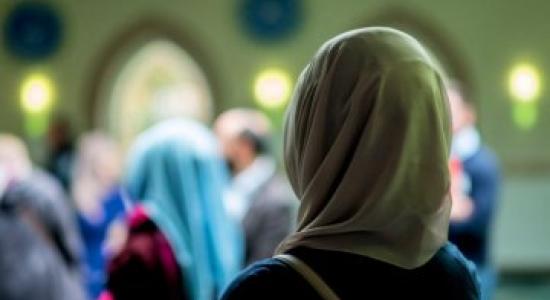A comparison between the reality of education in the Arab World as a whole, and the reality of education in the occupying country, whose area does not exceed half of a Scandinavian country
In 1973, the play Madrasa al-Mushaghābibīn (The Unruly School), written by the Egyptian “Ali Salem” was performed touching on one of the forms of expressing and consolidating the general impression - perhaps - about the reality of education in the Arab World. The students are gangs, the teacher is mentally retarded, and the principal is just stupid and opportunistic.
Hence, was this picture a reflective of reality? Or an attempt to consolidate the reality? Today, more than three decades have passed since the performance of the play, the media reality - in particular - still conveys the same perception, and consolidates the same image, even worse than the school education the Arab World is witnessing! Even the humiliation of the Egyptian media in particular reached the inclusion of an Egyptian movie in a very low-quality comparison, hence posing the following question: “Is this a teacher? Is this a dog?!”
What do we want from education in our Arab World? Does the educational reality achieve anything we want?
This report discusses the educational reality of schools and universities in the Arab World in terms of figures, facts, problematic issues, and the methodology of Arab Education System in general, and a consideration of the situation of some Arab countries, and what they suffer in particular, or what they are expected to make additional high-quality contributions.
Facts and Figures
Having a quick look at the figures issued by the Arab institutions working in the field of education, and considering the education in the Arab World, we find that: the number of illiterates in the Arab World has almost reached about 54 million. A slow decline in the number of illiterates in the Arab World between 2008 and 2015 has been recorded from around 58 million to 54 million illiterates. According to the (UNFPA) report on the state of the world’s population, that the population of the Arab World is about 327 million.
According to the data, by 2024, it is expected that there will be 49 million illiterates in the Arab World, of whom about 15.5 million are males, and 33.5 million are females, and the number of illiterate youth is about 6.5 million.
According to the Arab Observatory, in 2014 there was about 5.6 million Arab children, who aged between 6 and 11, did not enroll in school (61.2% of them are girls).
The data on Arab universities is no exception, whether at the level of reality in which these universities go through in terms of construction, laboratories, experiences, curricula, or the quality of students who come from the dilapidated school system.
Dr. Nidhal Guessoum and Athar Osama wrote a valuable research paper published in the Arabic edition of (Nature Magazine), in which they summarised the problems and proposals to improve the reality of university education in the Islamic World. The report demonstrates some basic statistics on the universities and scientific publishing, stating that: “The 57 countries of the Islamic World is considered the home to about 25% of the world’s population. In other words, these are the countries in which Muslims represent the majority of the population, and which they belong to the Organisation of Islamic Cooperation (OIC). However, in 2012, the contribution of these countries to global patents was 1.6%, 6% of academic publications, and only 2.4% of global research expenditures, and only three people from the OIC countries won the Nobel Prize for Science. Today, we find in these countries only 12 universities ranked among the top 400 universities in the world, and we do not even find any of these universities ranked among the top 100 in the world.”
In the report, the researchers touched on the necessity of developing curricula and integrating the humanities with pure sciences, as well as on the necessity to rehabilitate teachers on the mechanisms of modern education, and to make competence and excellence a measure of accepting, graduating, and promoting students to the next grade, and other fundamental issues.
This information, compared to the state of education in the Zionist Occupation State, is catastrophic
The area and the number of occupied Israelis is small. In fact, Israel is equivalent to about half the state of the Swiss Confederation, or being equivalent to one of Cairo’s neighborhoods. Yet, it has important knowledge platforms, and that very few people may know that Israel’s universities are among the premiering, best and leading universities in the world. Hebrew University, in particular, is an important scientific edifice. It has been the intended destination by scholars from all over the world to draw knowledge and literature. The International School in Herzliya has also become a unique global experience in the dissemination of rare sciences.
What is unique about Israeli universities is that they keep pace with the civilisation and scientific progress. According to the data published by the Globus Economic Newspaper, 11% of all developments and researches are hosted by the Israeli universities and institutes that develop partnerships with research and science centers in the world. The newspaper states that this percentage was 25% in 1991. However, the growth of the hi-tech industry and civil research resulted in a decrease in the size of the contribution of universities that had a significant role.
The Hebrew University of Jerusalem
Hebrew University is the first university established in the region. Today, Hebrew University is Israel’s premier and leading educational/research institution. It is ranked internationally among the 100 leading universities in the world. Eight of its affiliates and alumni have been awarded the Nobel Prize.
The International School of Herzliya - IDC Herzliya
The International School in Herzliya, or the Israeli Harvard, that have not reached three decades old, offers students with opportunities: in a bachelor's degree. The university offers various programmes in Business Administration, Communications, Economics, Business, Government Administration, Sustainability, and Psychology.
What in fact the University is charactarised by is the offered master's programmes (post-graduate), which really include rare specialisations, namely:
- Counter-Terrorism and Homeland Security Studies.
- Diplomacy and Conflict Studies.
- Financial Economics.
- Organisational Behaviour and Development.
- Social Psychology.
The University has about 7,000 undergraduate students, in addition to (knowledge seekers) from all over the world, including politicians and diplomats from regions located within the strategic periphery of the State of Israel. The number of participants in the whole "Alumni" exceeds twenty thousand researchers.
It also has an open English Language programme for foreign students and researchers.
Technion-Israel Institute of Technology
It goes without saying that, today, Israel occupies the second place after the United States of America in the field of high-tech studies and the related fields in sciences, knowledge, and technology. The Israel Institute of Applied Engineering and Technicians is noted as a global pioneer in multidisciplinary research.
This university is ranked among the top 100 international universities in the field of computer science, and one of the most famous researchers in it is Hossam Hayek, who developed the nose that smells cancer. The institute is also known for its global innovations developed by researchers and alumni.
Tel Aviv University
Today, Tel Aviv University is considered, in terms of the number of students, the largest institution in Israel. It is a home to over 30,000 students and researchers studying and researching in nine faculties. This year, the university turns 61, and it is ranked among the top 100 important universities in the world in the field of Archeology.
Ben-Gurion University of the Negev
The official name of the university is “Ben-Gurion University of the Negev” located in the city of Beersheba in southern Israel. It has around 20,000 students and researchers, including thousands of Bedouin Arabs. More than a decade ago, the University ranked among the top 50 universities around the world that are less than 50 years old.


